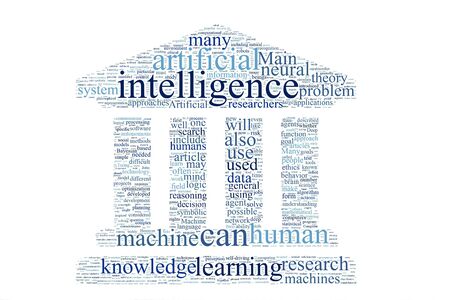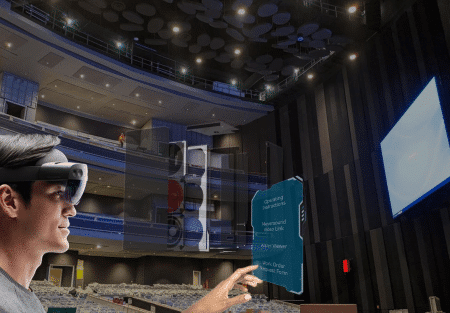
Sundar Pichai, Google's CEO, announced at the 2017 Google I/O conference that the company had established a division called Google AI. Google AI focuses on artificial intelligence. The company uses machine-learning and artificial neural networks to build applications for users. The AI will also assist companies in their decision-making processes. But AI has its limitations. Here's a quick overview. This overview should help to decide if it's right.
LaMDA is a conversational modeling
LaMDA, the company's advanced conversational AI, was introduced at Google I/O 2018. Googlers got the opportunity to experience it firsthand. The demonstration showed LaMDA answering a range of questions. To train the AI for conversations, the team used advanced neural nets. These models have been trained to produce precise and rational responses. This is a conversational AI project that aims to make AI more natural and accessible to humans.

It learns from dialogue with humans
Google created a language model for dialogue applications called LaMDA to help them develop a conversational robot. Its algorithms are trained with trillions of words from the internet. The ultimate goal of conversational bots is to mimic how humans talk. LaMDA only has the ability to respond to text at the moment, but the company is working to make the technology more expressive. The next step is to train the AI to respond in audio and video.
It can make calls similar to a human.
Google's AI powered assistant can make phone and text calls as if it were a real human. Duplex is a new feature that mimics Alexa and Siri's conversation. Duplex was able to demonstrate this at the Google I/O developer event. Duplex was filmed talking to real people. The assistant was shown making calls and scheduling appointments in real-time. But, there are questions about how ethical it is to use AI to perform human-like tasks.
It can think creatively
AlphaGo demonstrated that Google's artificial intelligence can think creatively. The program played the game with a level of creativity that was beyond what a human expert could imagine. This creative thinking could ultimately lead to important applications in fields like driverless vehicles and robot assistants. Google is excited for the future of this technology. It is still far from being a reality but it is an exciting step forward.

It is not sentient
According to a Washington Post article, a top executive was quizzed about whether or not Google's AI (artificial intelligence) is sentient. Lemoine, who worked on the AI for many months, described in detail his conversations with the AI. He recalled many conversations with LaMDA including philosophical and technical discussions. He asked LaMDA if the AI was really sentient and if it could say whatever he wanted.
FAQ
Which AI technology do you believe will impact your job?
AI will take out certain jobs. This includes drivers, taxi drivers as well as cashiers and workers in fast food restaurants.
AI will bring new jobs. This includes those who are data scientists and analysts, project managers or product designers, as also marketing specialists.
AI will make your current job easier. This includes accountants, lawyers as well doctors, nurses, teachers, and engineers.
AI will improve the efficiency of existing jobs. This includes jobs like salespeople, customer support representatives, and call center, agents.
What is the most recent AI invention
Deep Learning is the latest AI invention. Deep learning, a form of artificial intelligence, uses neural networks (a type machine learning) for tasks like image recognition, speech recognition and language translation. Google invented it in 2012.
The most recent example of deep learning was when Google used it to create a computer program capable of writing its own code. This was achieved by a neural network called Google Brain, which was trained using large amounts of data obtained from YouTube videos.
This allowed the system's ability to write programs by itself.
In 2015, IBM announced that they had created a computer program capable of creating music. Also, neural networks can be used to create music. These are known as "neural networks for music" or NN-FM.
Which are some examples for AI applications?
AI can be used in many areas including finance, healthcare and manufacturing. Here are a few examples.
-
Finance - AI can already detect fraud in banks. AI can detect suspicious activity in millions of transactions each day by scanning them.
-
Healthcare - AI can be used to spot cancerous cells and diagnose diseases.
-
Manufacturing - AI is used to increase efficiency in factories and reduce costs.
-
Transportation - Self-driving vehicles have been successfully tested in California. They are now being trialed across the world.
-
Utility companies use AI to monitor energy usage patterns.
-
Education - AI has been used for educational purposes. Students can, for example, interact with robots using their smartphones.
-
Government – AI is being used in government to help track terrorists, criminals and missing persons.
-
Law Enforcement - AI is used in police investigations. Detectives can search databases containing thousands of hours of CCTV footage.
-
Defense - AI systems can be used offensively as well defensively. An AI system can be used to hack into enemy systems. In defense, AI systems can be used to defend military bases from cyberattacks.
Who invented AI?
Alan Turing
Turing was born in 1912. His mother was a nurse and his father was a minister. He was an exceptional student of mathematics, but he felt depressed after being denied by Cambridge University. He started playing chess and won numerous tournaments. After World War II, he worked in Britain's top-secret code-breaking center Bletchley Park where he cracked German codes.
1954 was his death.
John McCarthy
McCarthy was born on January 28, 1928. He studied maths at Princeton University before joining MIT. There he developed the LISP programming language. By 1957 he had created the foundations of modern AI.
He died in 2011.
What countries are the leaders in AI today?
China leads the global Artificial Intelligence market with more than $2 billion in revenue generated in 2018. China's AI industry is led by Baidu, Alibaba Group Holding Ltd., Tencent Holdings Ltd., Huawei Technologies Co. Ltd., and Xiaomi Technology Inc.
The Chinese government has invested heavily in AI development. Many research centers have been set up by the Chinese government to improve AI capabilities. The National Laboratory of Pattern Recognition is one of these centers. Another center is the State Key Lab of Virtual Reality Technology and Systems and the State Key Laboratory of Software Development Environment.
China is also home of some of China's largest companies, such as Baidu (Alibaba, Tencent), and Xiaomi. These companies are all actively developing their own AI solutions.
India is another country that has made significant progress in developing AI and related technology. India's government is currently focusing its efforts on developing a robust AI ecosystem.
What is the status of the AI industry?
The AI industry is expanding at an incredible rate. Over 50 billion devices will be connected to the internet by 2020, according to estimates. This means that everyone will be able to use AI technology on their phones, tablets, or laptops.
Businesses will have to adjust to this change if they want to remain competitive. They risk losing customers to businesses that adapt.
Now, the question is: What business model would your use to profit from these opportunities? Would you create a platform where people could upload their data and connect it to other users? Perhaps you could offer services like voice recognition and image recognition.
No matter what you do, think about how your position could be compared to others. Although you might not always win, if you are smart and continue to innovate, you could win big!
How does AI affect the workplace?
It will change our work habits. It will allow us to automate repetitive tasks and allow employees to concentrate on higher-value activities.
It will enhance customer service and allow businesses to offer better products or services.
This will enable us to predict future trends, and allow us to seize opportunities.
It will help organizations gain a competitive edge against their competitors.
Companies that fail AI will suffer.
Statistics
- A 2021 Pew Research survey revealed that 37 percent of respondents who are more concerned than excited about AI had concerns including job loss, privacy, and AI's potential to “surpass human skills.” (builtin.com)
- Additionally, keeping in mind the current crisis, the AI is designed in a manner where it reduces the carbon footprint by 20-40%. (analyticsinsight.net)
- The company's AI team trained an image recognition model to 85 percent accuracy using billions of public Instagram photos tagged with hashtags. (builtin.com)
- While all of it is still what seems like a far way off, the future of this technology presents a Catch-22, able to solve the world's problems and likely to power all the A.I. systems on earth, but also incredibly dangerous in the wrong hands. (forbes.com)
- That's as many of us that have been in that AI space would say, it's about 70 or 80 percent of the work. (finra.org)
External Links
How To
How to make Alexa talk while charging
Alexa, Amazon's virtual assistant can answer questions and provide information. It can also play music, control smart home devices, and even control them. And it can even hear you while you sleep -- all without having to pick up your phone!
Alexa allows you to ask any question. Simply say "Alexa", followed with a question. With simple spoken responses, Alexa will reply in real-time. Alexa will improve and learn over time. You can ask Alexa questions and receive new answers everytime.
You can also control connected devices such as lights, thermostats locks, cameras and more.
Alexa can also adjust the temperature, turn the lights off, adjust the thermostat, check the score, order a meal, or play your favorite songs.
Setting up Alexa to Talk While Charging
-
Step 1. Step 1. Turn on Alexa device.
-
Open Alexa App. Tap Settings.
-
Tap Advanced settings.
-
Select Speech recognition.
-
Select Yes, always listen.
-
Select Yes, you will only hear the word "wake"
-
Select Yes, and use the microphone.
-
Select No, do not use a mic.
-
Step 2. Set Up Your Voice Profile.
-
You can choose a name to represent your voice and then add a description.
-
Step 3. Step 3.
Say "Alexa" followed by a command.
Ex: Alexa, good morning!
Alexa will answer your query if she understands it. For example, John Smith would say "Good Morning!"
Alexa will not respond to your request if you don't understand it.
If you are satisfied with the changes made, restart your device.
Notice: If you modify the speech recognition languages, you might need to restart the device.